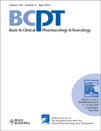l-Carnitine Attenuates Cardiac Remodelling rather than Vascular Remodelling in Deoxycorticosterone Acetate-Salt Hypertensive Rats
Abstract
Abstract: l-Carnitine is an important co-factor in fatty acid metabolism by mitochondria. This study has determined whether oral administration of l-carnitine prevents remodelling and the development of impaired cardiovascular function in deoxycorticosterone acetate (DOCA)-salt hypertensive rats (n = 6–12; #p < 0.05 versus DOCA-salt). Uninephrectomized rats administered DOCA (25 mg every 4th day s.c.) and 1% NaCl in drinking water for 28 days developed cardiovascular remodelling shown as systolic hypertension, left ventricular hypertrophy, increased thoracic aortic and left ventricular wall thickness, increased left ventricular inflammatory cell infiltration together with increased interstitial collagen and increased passive diastolic stiffness and vascular dysfunction with increased plasma malondialdehyde concentrations. Treatment with l-carnitine (1.2% in food; 0.9 mg/g/day in DOCA-salt rats) decreased blood pressure (DOCA-salt 169 ± 2; + l-carnitine 148 ± 6# mmHg), decreased left ventricular wet weights (DOCA-salt 3.02 ± 0.07; + l-carnitine 2.72 ± 0.06# mg/g body-wt), decreased inflammatory cells in the replacement fibrotic areas, reduced left ventricular interstitial collagen content (DOCA-salt 14.4 ± 0.2; + l-carnitine 8.7 ± 0.5# % area), reduced diastolic stiffness constant (DOCA-salt 26.9 ± 0.5; + l-carnitine 23.8 ± 0.5# dimensionless) and decreased plasma malondialdehyde concentrations (DOCA-salt 26.9 ± 0.8; + l-carnitine 21.2 ± 0.4# μmol/l) without preventing endothelial dysfunction. l-carnitine attenuated the cardiac remodelling and improved cardiac function in DOCA-salt hypertension but produced minimal changes in aortic wall thickness and vascular function. This study suggests that the mitochondrial respiratory chain is a significant source of reactive oxygen species in the heart but less so in the vasculature in DOCA-salt rats, underlying the relatively selective cardiac responses to l-carnitine treatment.




